Well, here's my first attempt. I'm not entirely happy with it so I'm going to try again, but I don't think my first one turned out too badly.
One thing I'm very happy about is that to my eye, the color looks very close. My first post shows the that the little tailstock knob I'm trying to replicate is only one of three knobs, so color matching is critical (to me, anyway). I tried the handle of a Millers Falls screwdriver which I was told would match - no dice. The red was a bit too pinkish - the real Permaloid that Rivett used has a very deep, rich hue. So it turns out the 3/4" x 12" acrylic red rod from eBay is, in my opinion, an acceptable material for this project.
This is what happens when I decide to whack off a section of this acrylic rod - it ain't pretty, and it's messy as heck. The first thing I learned about this acrylic material is that IT'S NOT PERFECTLY ROUND! I tried and tried to true it up in my 4-jaw chuck , but I could tell that it wasn't going to happen, so I finally switched to my good old 3-jaw. I wish I had a Myford Super7...
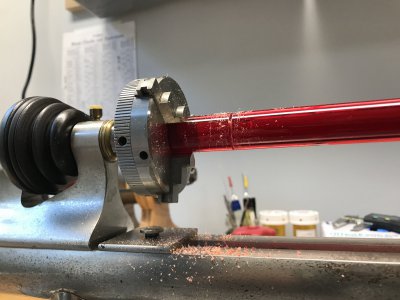
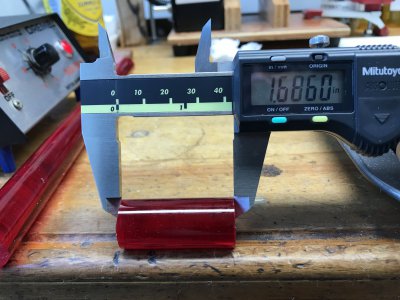
Getting set to face off the end I left sticking out:
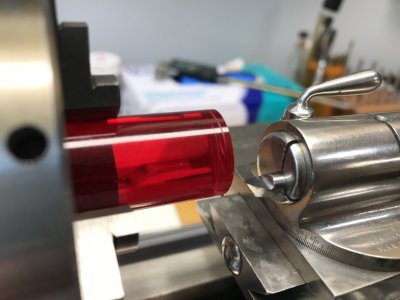
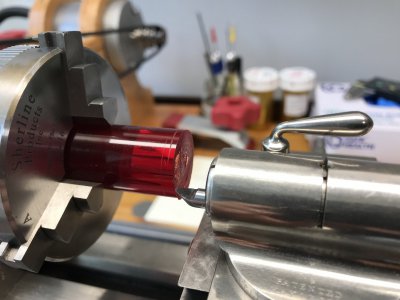
For some reason I didn't take pics of the final faced surface, or drilling the center with a #21 wire gauge carbide PCB drill (for the 10-32 tap). Anyway, for this project I bought a plug tap and a bottoming tap for 10-32, from MSC. Here's my fancy tapping setup - the back end of the tap is seated in my tailstock runner, with a little crescent wrench to hold the tap still. I'm pushing the runner with one hand while rotating the headstock with the other hand:
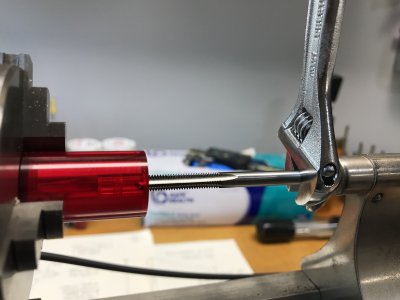
Getting there:
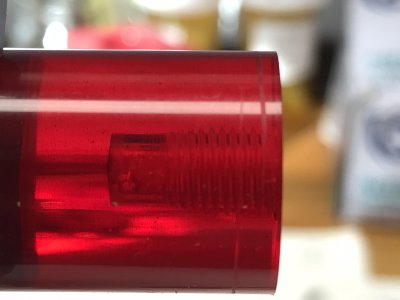
After the bottoming tap and blowing the debris out of the hole:
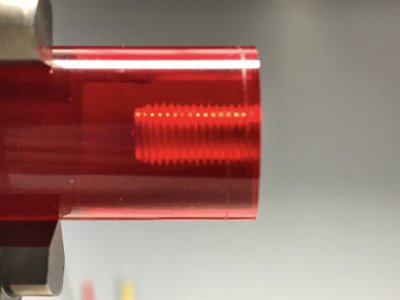
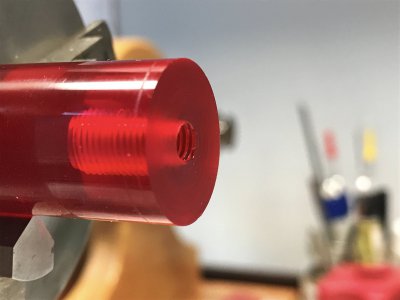
Starting to turn down the acrylic to the minor diameter. At this stage I'm beginning to think my order of operations is backward. But I'm this far into it, so I decided to just blast ahead and do my best, but I'm realizing I might have to do this again.
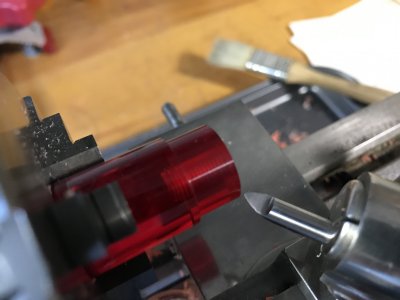
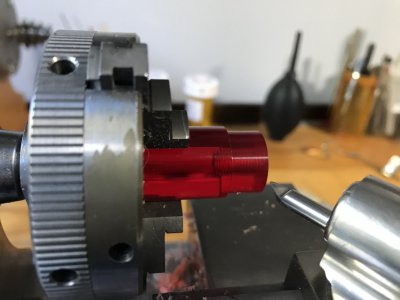
I kept turning down the material surrounding the drilled/tapped section until I reached what I thought was my destination - the OD of the tailstock runner the knob is supposed to screw onto. Mistake! I was only supposed to turn it down to the runner's OD plus a little bit more. Oh well. I'm going to make another one, so I'm adding this onto my list of "don't do that again" mistakes.
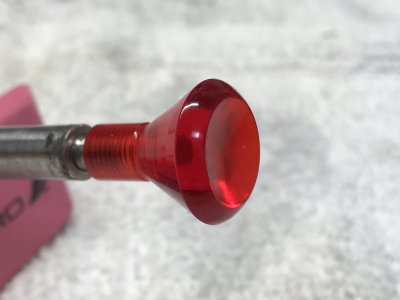
Here you see the side profile. The sides are straight instead of the proper concave radius, because that was before I figured out how to make an actual proper concave radius. I guess I just figured I'd turn a straight side first, and then put a radius afterward. It didn't turn out that way, as you can see. The convex radius on the rim was easy - I just turned the rim with a series of different angles on my sliderest, and knocked the corners down with wet/dry paper. The big lesson was I finally realized how to turn a nice concave radius with my sliderest! I put that lesson to use on the end of the knob. I'm going to remember that trick when I do this again...
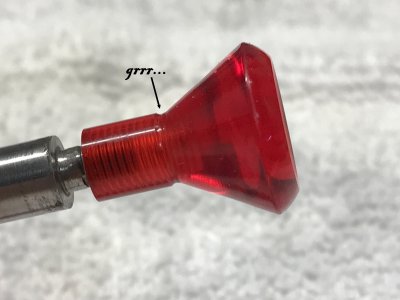
I need to figure out what to do with the back end of the runner's threads - when I cracked open the hideous black knob that someone put on the runner, the runner's threads were almost impossible to clean up without damage. What I don't understand is what to do about the threads next to the runner's body - it's metal, but it's a hideous glob of hard metal that I might have to grind off. I need to seat the knob all the way down to the runner, but that glob is in the way. I strongly suspect there might be additional threading underneath that glob, but I need to get the glob off of there somehow. If it turns out to be too difficult to remove the glob, I suppose I could just grind it down because there's enough good thread to hold the knob on...
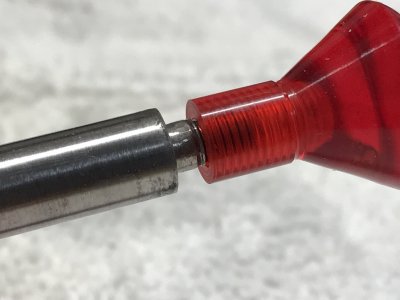
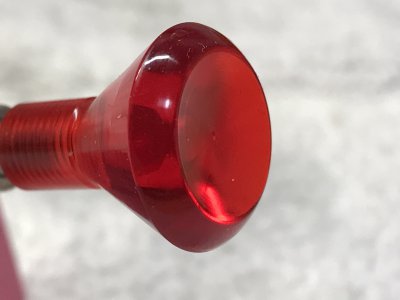
Here's the "glob" of metal at the base of the runner's threads:
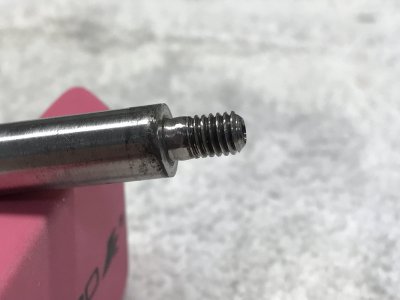
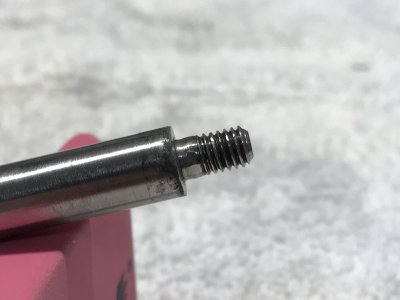
Anyway, I'm going to do things differently on my next attempt. Thanks for indulging me. Comments, suggestions, are welcome.

















